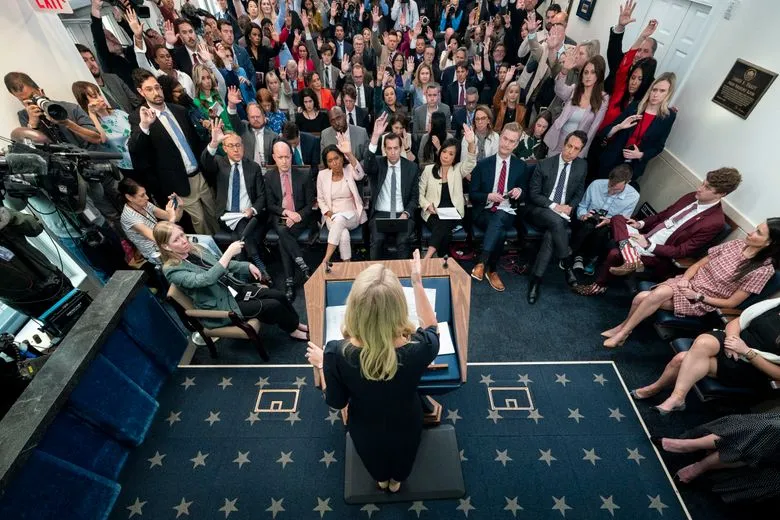The White House’s New Media Policy: A Dangerous Precedent
In recent weeks, the Trump administration has taken bold steps to redefine the relationship between the White House and the media. In a contentious move that has alarmed many journalists and advocates for press freedom, the administration has implemented a new media policy that significantly restricts the access of wire services, including the esteemed Associated Press (AP), to the President of the United States. This latest development is not just an attack on a specific news organization; it’s a defining moment in the ongoing struggle between the media and the current administration.
The Downside of Limiting Access
Limiting access to the President ultimately means limiting the scope and diversity of information that flows to the public. Historically, wire services like the AP have played a crucial role in providing timely news to local and national outlets. They serve as an essential lifeline for smaller newspapers and broadcasters that rely heavily on wire reports to keep communities informed.
The Trump administration’s decision to cut off the AP from the coverage pool raises critical concerns about transparency and accountability. By restricting the flow of information from the highest office in the land, the administration risks fostering a culture of secrecy that endangers the principles of democracy.
The Context of This Decision
This development cannot be viewed in isolation. It comes amidst an ongoing feud between President Trump and the mainstream media, particularly organizations that offer critical coverage of his administration. Since the beginning of his presidency, Trump has consistently labeled critical news articles as “fake news,” and has often resorted to dismissing the media altogether. The AP has been in the crosshairs of this administration due to its role as a leading news agency, breaking some of the most significant stories that shine a light on the troubles within the government.
Furthermore, this skirmish represents part of a broader trend among governments to reshape how the media operates and how they are perceived. The narrative being constructed presents news organizations as adversaries, rather than partners in maintaining an informed citizenry. The danger is that if access to information is selectively granted, it inevitably translates to a skewed narrative that may not reflect the truth.
Comparative Analysis: Previous Administrations
Reflecting on past administrations, this tactic of minimizing media access is not entirely new. However, the scale and audacity of Trump’s measures are striking. In previous administrations, while individual relationships with the media could at times be strained, there existed a mutual understanding of the need for a free press as a cornerstone of American democracy.
The Obama administration, for instance, had its own issues with media access, notably during the controversies surrounding the use of social media. However, it didn’t seek to actively cut off access to reputable news services. Instead, Obama utilized modern platforms to push messages directly to the public, which did draw criticism for potentially sidelining traditional journalism.
Trump, however, appears to be taking a direct confrontational approach. With action taken against the AP, it opens up opportunities for misinformation to flourish, particularly as the public becomes more reliant on social media—platforms that can aggregate information but also allow for the spread of inaccuracies.
The Reaction from Journalists and Advocacy Groups
The decision to limit access to news services has drawn sharp criticism from journalistic organizations and advocacy groups. The AP, for example, issued a public statement expressing deep concern over the lack of press access to the President, calling it an alarming precedent that goes against the principles of a free society.
The implications of this move extend beyond just the AP. Organizations like the Reporters Committee for Freedom of the Press and the Society of Professional Journalists have similarly condemned the actions taken by the administration. They underscore the critical role that a free press plays in a functioning democracy, calling on the administration to reconsider its position and to engage with journalists rather than limiting their access.
Impact on Public Trust
As the administration seeks to control the narrative, there lies a far more insidious risk: the potential erosion of public trust. Mistrust in institutions has persistently grown in recent years and is only exacerbated when the government works to stifle objective reporting. For citizens looking to understand current affairs, the absence of information from credible sources creates a vacuum that can easily be filled with misleading or false information.
The consequences of this could be profound. In a climate where citizens rely on information to make educated decisions—be it in elections, public health, or economic matters—anything that limits their access to the truth poses a threat to democracy itself. By shrouding governmental activities in secrecy, the Trump administration risks deepening the chasm of public distrust that already exists.
The Future of Media Relations in the Trump Administration
Moving forward, the implications of this media policy cannot be understated. The reliance on information from limited sources jeopardizes journalists’ ability to hold officials accountable. The White House needs to understand that journalists are not merely adversaries; they are essential watchdogs that provide a necessary role in the health of a democracy.
The path forward will require journalists to continue advocating for access to the President, as well as holding the administration responsible for transparency and accountability. Engaging with the public through traditional methods, alongside modern platforms, will remain critical if they are to ensure that the narrative is not dictated solely by one perspective.
Final Thoughts
The Trump administration’s decision to restrict access to wire services is a troubling departure from the principles that have long upheld a transparent democracy. The implications for both the media and the public are vast, threatening the relationships between journalists and the government while endangering the rights of citizens to be informed. Ultimately, the health of our democracy aside, this ongoing battle between the White House and the press illuminates the critical role of free and fair reporting in shaping informed citizens.
As the battle rages on, it remains to be seen how the administration will respond to the growing backlash and what lasting effects this will have on the relationship between the media and government moving forward.







